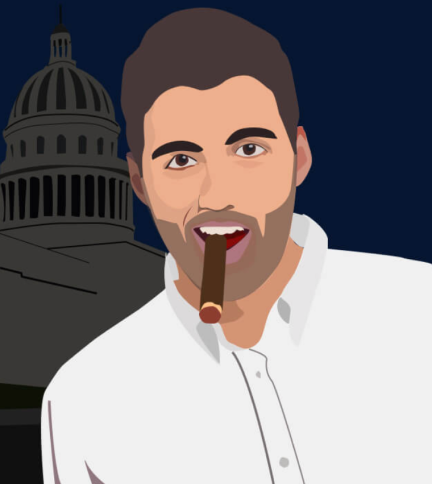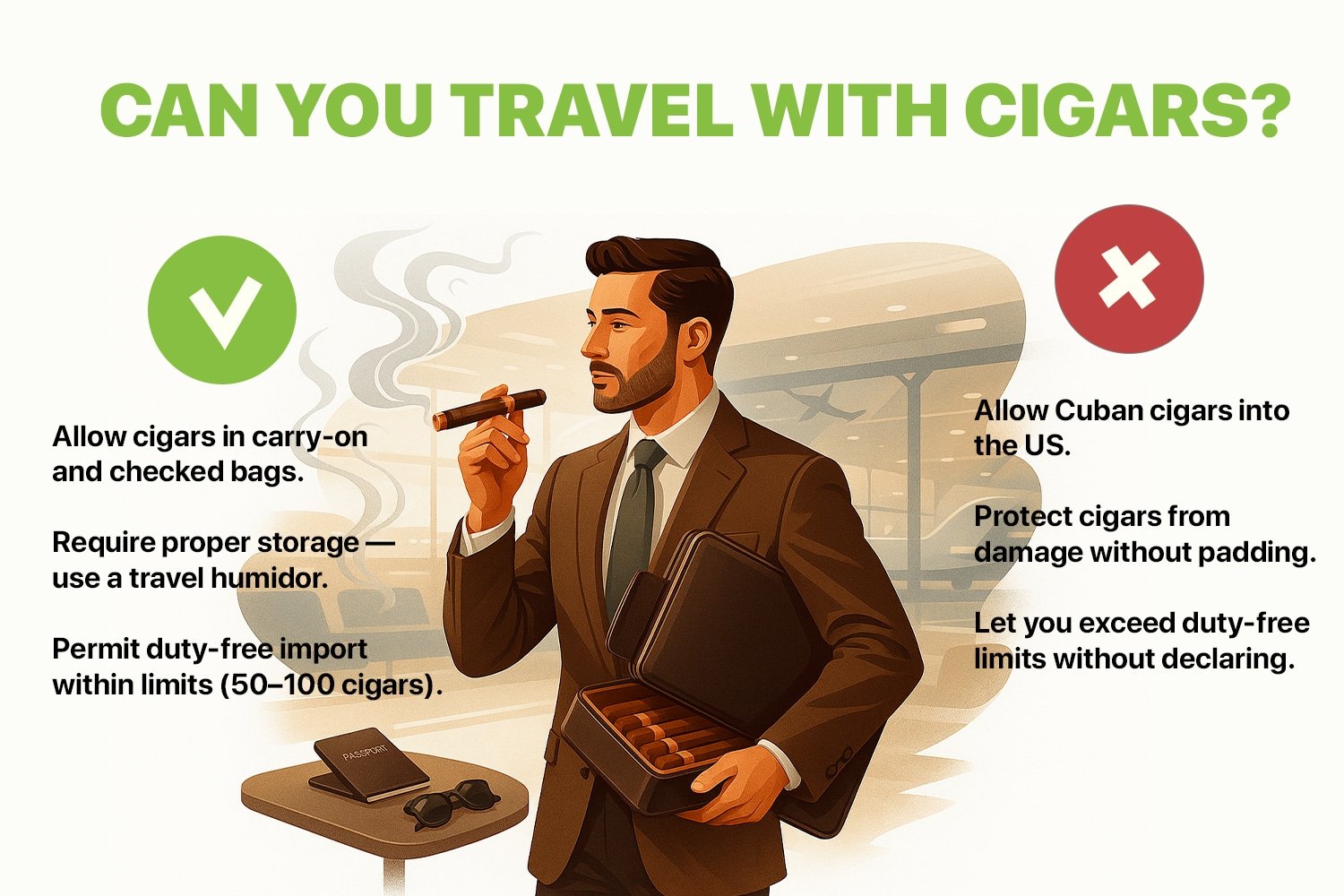Nov 25, 2025
Last Modified: Nov 25, 2025
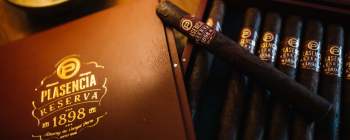
Did you know that the history of the cigar can be traced back over 3,000 years? It’s an age-old tradition that first started out as a tribal ritual. Cigars originated in the Caribbean and Central America. Here, indigenous people would roll and smoke dried tobacco leaves. The name ‘cigar’ most likely derives from the Mayan word ‘sicar.’ This means to smoke rolled tobacco leaves.
For years, tobacco was regarded as a medicinal plant (and still is, by some scientists, today). It has a rich history of being used to cure common illnesses. But eventually, it became the popular trade product we know today.
Nowadays, it’s an incredibly popular pastime for enthusiasts all around the world. So, if you’d like to know more about the rich history behind your favorite Robusto or Cohiba, keep reading.
Below, we answer: where did cigars originate? We’ll also tackle some frequently asked questions.
The Origins of Tobacco: A Pre-Cigar Story
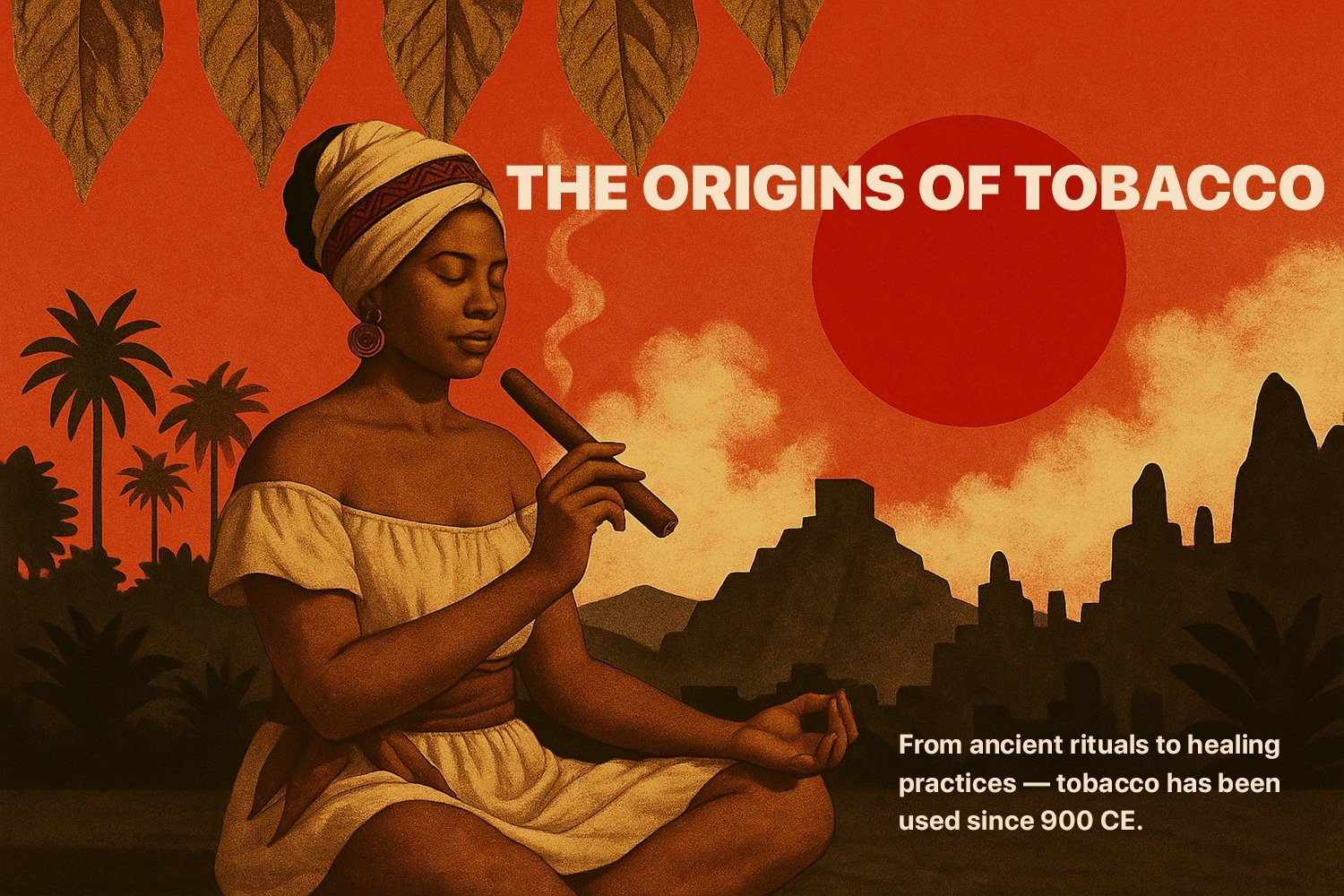
First things first, when were cigars invented? As we mentioned briefly, cigars first originated from indigenous tribes. These were primarily in the Caribbean and Central America.
We don’t have a precise date for when the cigar was actually invented. However, we do know that it was first encountered by Christopher Columbus back in 1492. Here, he first smelled the scent of tobacco leaves drifting through the island.
The actual history of the cigar can be traced back even further than this, however. Some carvings found on a Mayan pot show their priests exhaling smoke. This means that the use of tobacco in cigars actually dates back to 900 CE. At this point in history, tobacco was smoked to cure illnesses. It was also used for religious ceremonies.
Discovery of Tobacco
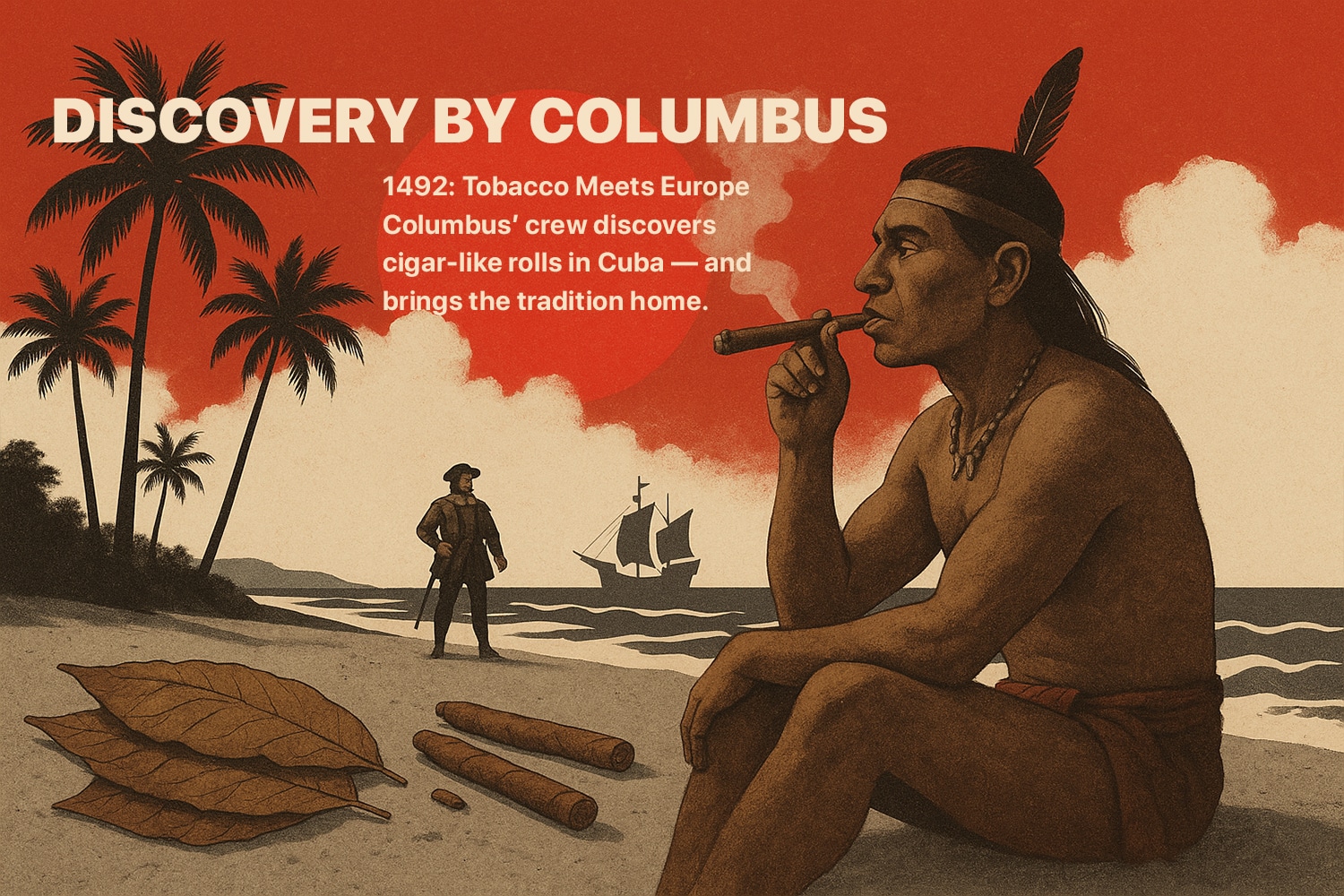
Columbus and his men first got to try the ancient practice of smoking in Cuba, where they settled. It was his crew member, Rodrigo de Jerez, who first smoked a cigar-like roll in Cuba. They eventually got the hang of the tradition after witnessing natives on the island. They would see them rolling up the dried leaves and lighting them.
The story goes that de Jerez was enamoured with the act of cigar smoking. When he returned to his native Spain, he continued to smoke. The locals in the region were unaccustomed to seeing puffs of smoke emanating from the mouth. As a result, de Jerez was accused of witchcraft.
So, tobacco was treated with suspicion early on. Despite this, the Spanish and other Europeans started to enjoy smoking tobacco leaves.
Many explorers visiting Cuba would send back shiploads of tobacco back to Europe. It was starting to become a rising success.
In fact, the word ‘nicotine,’ comes from the French name, ‘Jean Nicot.’ Nicot was the French Ambassador to Portugal. He is most famous for sending powdered tobacco to the French Court. Here, it was used by Catherine de’ Medici, the Queen, to treat migraines.
The Origins of Cigar Making in Europe
Cigars became more of a commonplace luxury in Europe. Because of this, more and more cigar workshops started to emerge in Spain. As time moved on, large factories began to open in the region. The first one was in Seville, in 1758.
The factory was controlled by the Spanish Monarchy at the time. This represented the real birth of the cigar industry.
Women, known as cigarellas, would be in charge of hand rolling the cigars. These were then exported all across the continent.
The leaves themselves came from Cuba, shipped all the way across the Atlantic. This also solidified Cuba's future as the top supplier for cigars.
It was also around this time that the first premium cigars were produced. They’re very similar to the ones we recognize today. These included fine, aged tobacco, rolled tightly in tobacco leaves. This created a high-quality smoke.
The cigar was not only enjoyed for its flavor and the overall smoking experience. It was also highly regarded for its fashionability. Eventually, the lower classes became associated with pipe smoking. This was deemed cheap and less refined. The wealthier classes, on the other hand, used the cigar as a symbol of status. We can see these traces all the way to the modern day. Businessmen regularly smoke cigars in meetings, as a symbol of success and wealth.
Meanwhile, cigar smoking was also becoming popular in England. This is especially true for the Connecticut wrapper we’ve all come to appreciate today. Its popularity first began with an English officer who lived near Hartford. This officer returned to his home in Connecticut from a siege in Havana. He brought back about 30,000 cigars and hoards of Cuban seed. This would, eventually, adapt to a different climate.
The Rise of Cuban Cigars
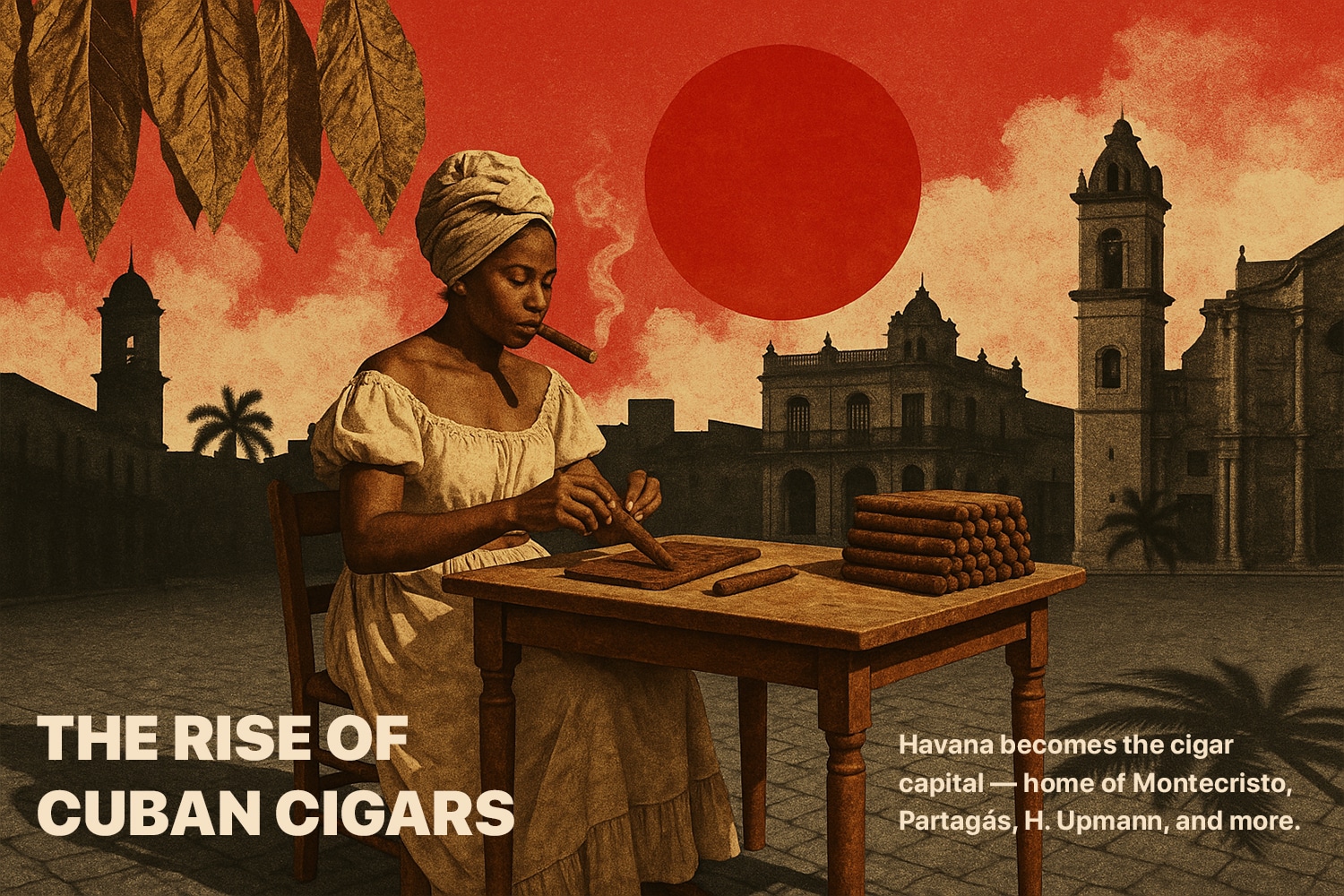
Cuba became a key player in the commercialization of the cigar industry early on. They were solely responsible for shipping tobacco to the factories in Spain.
The high quality of the soil in the region ensured the very best supplies. This was especially true in parts of Vuelta Abajo and Partido.
This meant that by the beginning of the 1800s, Cuban tobacco was considered the best in the world. Havana became the cigar capital, with huge factories bearing namesakes we recognize today. These include Partagás, H. Upmann , Romeo y Julieta, and Hoyo de Monterrey. Each boasted their own special flavor profile. This was reflective of the soil and unique climates.
By approximately 1850, millions of cigars were exported on a yearly basis.
It is undeniable that Cuba was the uncontended lead in the market. However, regions like the Dominican Republic, Nicaragua, and Honduras, started to produce tobacco industries too.
In the US, top cigar making cities included Tampa, Florida, and Lancaster, Pennsylvania. These factories employed thousands of immigrants from Cuba.
The Cuban Revolution: A Turning Point
As the years drew on, no era saw such an upheaval in the cigar market as the Cuban Revolution. This all took place in 1959, with a controversial figure named Fidel Castro.
Castro was a Cuban politician, and the leader of Cuba at this period in history. Though many saw him as a tyrant, others viewed him as the voice of egalitarianism. As a result of the revolution, the cigar industry became nationalized.
A few years later, in 1962, the United States imposed an embargo on products from Cuba. Then-president, John F. Kennedy was responsible for signing the embargo banning Cuban goods. Apparently, the president himself was a great lover of Cuban cigars. Just moments before signing the ban, he ordered a box of 1,200 Cuban-made cigars. He allegedly averaged four to five cigars a day.
Ultimately, this meant that cigars had lost their largest market. But, it also meant that these products were considered 'forbidden fruit.’ This arguably made them even more sought after.
The legislation was severe in nature. It meant not only were Americans banned from purchasing cigars in the US. They were also banned from purchasing cigars when taking trips to other countries. If they broke this law, they could incur hefty fines.
So how did people continue to enjoy cigar smoking? Many Cuban cigar-makers brought along seeds. They used these to cultivate plants in new territories. This became a good substitute as Cuban grown tobacco became unavailable.
This shift led to a renaming for some popular brands. For example, the Montecristo brand became known as ‘Montecruz’ in The Canary Islands. Nicaragua, The Dominican Republic, Honduras, and Mexico, also brought in Cuban cigar markers. Popular brands like Punch, H. Upmann, Partagas, Hoyo de Monterrey, and others renamed. These could then be sold legally in the US.
This had a big effect on the cigar industry as a whole. More and more countries were producing cigars, and with reduced labour costs. There was an influx of these new products in the market. This meant the handmade, premium cigar industry saw a huge decline in the US.
Cuba, meanwhile, continued to produce its cigars for markets outside the US. They were still hugely popular in areas across Asia and Europe.
Cigar Culture in the 20th Century
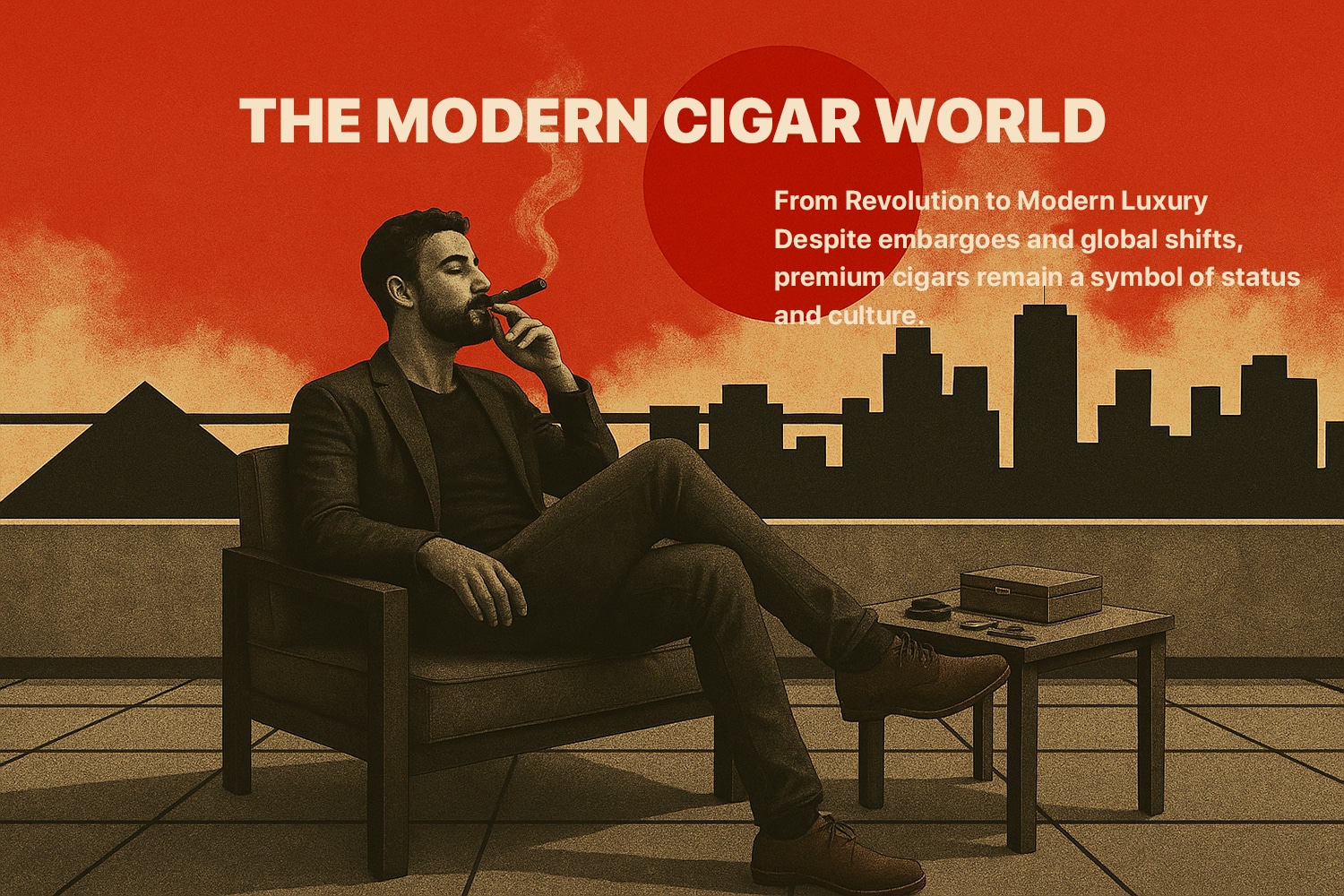
But what about cigar culture as a whole? It’s in the 20th century, where we’re able to trace the cigar’s solidification as a symbol of status and luxury.
There was a huge expense importing these products from Cuba. This meant they could really only be enjoyed regularly by the rich. Many important politicians and public figures became synonymous with cigar smoking. This included Sigmund Freud, Mark Twain, and Ulysses S Grant.
Freud was even quoted as saying that cigar smoking was a “great intensification of my capacity to work and facilitation of my self-control.” For him, smoking was considered an inherently “manly vice.”
Peak popularity
It was in the mid 20th century that they reached peak popularity. King Edward VII was an advocate for cigar smoking. This saw the public perspectives shift altogether. This was after the reign of Queen Victoria. Victoria was highly critical of cigar smoking. It was previously stigmatized under her rule.
As the decades drew on, cigar smoking saw various fluctuations in popularity. In the 1990s, Cigar Aficionado magazine was launched. The launch of the publication helped create a boom in the industry. By 1997, it’s safe to say things were flourishing.
But by the 2000s, the market started to cool down a bit. This was a result of anti-smoking regulations, which were beginning to come out in full force. Despite this, the premium segment of the cigar industry remained powerful.
Obama’s influence
The next important milestone in the history of the cigar came in 2014. This was within the office of President Barack Obama. Between 2014 and 2016, Obama started to make amends with the Cuban government. The new policies allowed the public to return with up to $100 worth of Cuban cigars and rum.
Over time, things become relaxed. Eventually, travellers were able to bring back as many Cuban cigars as they could fit. The only limits were the capacity of their carry-on luggage. This was an extremely exciting period for cigar enthusiasts. Aficionados were finally able to indulge in their favorite Cuban smoke. Relaxing in the comfort of their own homes.
Modern-day cigar smoking
Today, the 2020s have brought along an exciting period in the cigar industry. These were shaped heavily by the global pandemic, beginning in 2020. An unexpected shift occurred as a result of this, with cigar sales witnessing a huge surge. As people were spending more time at home, they sought out items of comfort and luxury.
Nowadays, there’s been a huge rise in social media. This means we’re seeing hoards of influencers and their respective cigar communities. This has provided people with a platform to share their love for cigars. They’re also free to connect with like-minded individuals.
Appreciating the History of Cigars
Cuban cigars have seen many shifts throughout history. Despite changing trends and influences, they maintain their popularity. They first originated as a ritual in indigenous ceremonies. Now, they’ve transformed into a huge, global industry.
So, next time you’re lighting up your favorite smoke, take a moment to appreciate the history of cigars. You can explore this long legacy by visiting us at Swiss Cuban Cigars. You’ll find the finest Cuban cigars on the market. We carry a wide range of your favorite Montecristos, Cohibas, and Partagas.
FAQs
What country made the first cigar?
The first cigars can be traced back 3,000 years ago. They originated with indigenous tribes in Central America and the Caribbean. The Maya, in particular, are credited with the invention of cigars. We can see this in ancient carvings made into pottery from the period. Spain, however, was responsible for their mass production.
Were cigars invented before cigarettes?
Yes, cigars far predate cigarettes. In fact, while cigars are around 3,000 years old, cigarettes only emerged in the 19th century. This was the period when mechanical rolling was invented. Shortly after, cigarette smoking became fashionable, reaching peak popularity after World War 1.
Where did cigars originate?
Cigars first originated in Central America and the Caribbean. However, after Christopher Columbus made his first visit, the practice spread widely. It was established all around Europe. It became particularly popular in Spain. The first cigar factory was established in Seville.



